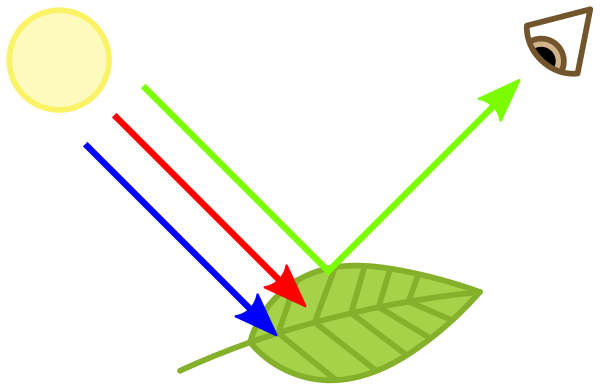Resources: Simone Weil on Plant Life, Chlorophyll & Related Topics
Eric Springsted & Ronald KL CollinsIn recent years as the Œuvres complétes of Simone Weil nears completion, Weil scholars have what is perhaps the greatest tool they will ever need to work on Weil’s thought. It is not only the complete set of texts but also has very thorough indices that allow one to track a concept through the notebooks and across time and disparate essays. For those who do not read French, or do not have access to all these volumes, things, however, are more difficult. Many of Weil’s works in English are published without indices, and even those that have them may not be as thorough as one would like.
It can be very helpful to generate one’s own index of a volume, say, the Notebooks. Doing so gives one in-depth first-hand familiarity with the text and then the index generated becomes a helpful reminder to find where a concept may be located. But that sort of work may not always be possible, and there may be times when an already prepared index is just what is needed for researching a thought of Weil.
For that reason, we will occasionally post an index to various Weilian concepts. Such indices will be across the range of Weil’s writings, including her Notebooks and essays. We invite scholars to use them and to add to them as they may find other instances of a concept of the word being used that is not listed. Scholars are invited to send in the results of any sort of concept indexing they have done. Hopefully, over time we can generate a significant and wide-ranging index for Weil’s works in English. Suggestions and corrections can be sent to the editor of Attention (see here).
The following citations to the seven works listed below refer to the commonly used English translations (U.S. editions) of Weil’s works. There are, to be sure, additional references in the larger French corpus of her works. We offer the citations below (though not exhaustive) to encourage additional thinking and commentary on this metaphorical and spiritual aspect of Weil’s thought.

“The vegetal sap, compounded of solar energy and water by virtue of the properties contained in chlorophyll, enters into us and becomes blood. Grace represents our chlorophyll.”
NB, vol. I, 368
“To understand the reasons for the use that the philosopher made of the term chlorophyll, borrowed from biological science, we [need to] examine three points: First of all, what is obvious, namely her interest in this science; secondly, we will review the Platonic images and myths that contributed to the emergence of this biological image. Finally, we will approach what I would like to call the great analog game to which Simone Weil lent herself with so much virtuosity throughout her writings.”
Florence de Lussy {see source below}
Notebooks (pages):
Volume I
95, 132, 159, 167, 184, 223, 231, 265, 322
Volume II
367, 368, 445, 483, 484, 487, 543-544, 584, 587, 616
First & Last Notebooks (pages):
70, 100, 105, 172, 174, 250, 265, 266, 279, 280, 347, 348
The Need for Roots {Routledge, 2002 // carrots cover} (pages)
87, 94, 111, 157, 267, 289-290
Selected Essays (pages):
19, 23, 53, 57, 217
Waiting for God (pages):
137, 161
Late Philosophical Writings (page):
138
Essay: “Some Thoughts on the Love of God” (pages: see sources below):
78-79
“The sun and the sap in the plants speak continually in the fields of what is the greatest thing in the world. We do not live by anythinng else but solar energy. . . . It is, perhaps under diverse forms, the only thing in the universe that constitutes a force opposed to gravity . . . .”
Late Philosophical Writings, 138
Sources
- Simone Weil, First and Last Notebooks (Oxford University Press, 1970, Richard Rees trans., reprinted by Wipf and Stock, 2015)
- __________, Notebooks (2 vols.) (Putnam’s Sons, 1956, Arthur Wills, trans.)
- __________, Selected Essays, 1934-1943: Historical, Political, and Moral Writings (Oxford University Press, 1962, Richard Rees trans., reprinted Wi by & Stock, 2015)
- __________, The Need for Roots (Routledge, 2002, Arthur Wills trans.)
- __________, Waiting for God (reprinted by Routledge Classics, 2021, Emma Craufurd trans.)
- __________, Late Philosophical Writings (University of Notre Dame Press, 2015, Eric Springsted, ed. & trans.)
- __________, “Some Thoughts on the Love of God,” in Simone Weil: Writings Selected edited with an introduction by Eric Springsted (Orbis Books, 1998, Richard Rees trans.)
Related
- Florence de Lussy, “L’Image Chlorophyllienne de la Grâce Chez Simone Weil” (“The Chlorophyllic Image of Grace in Simone Weil”)
- Martin Andic, “Discernment and the Imagination” in Richard H. Bell, ed., Simone Weil’s Philosophy of Culture (Cambridge University Press, 1993), p. 142.
- Joseph-Marie Perrin & Gustave Thibon, Simone Weil as We Knew Her (Routledge, 2003), p. 94.
- Rebecca Rozelle-Stone, Simone Weil and Continental Philosophy (Rowman & Littlefield, 2017), p. 83.
- David McLellan, Utopian Pessimist: The Life and Thought of Simone Weil (Simon & Schuster, 1990), p. 156.
- Sian Miles, ed., Simone Weil: An Anthology (Grove Press, 2000) p. 251.
- Simone Weil, Gateway to God, David Raper, ed. (Fontana, 1974), p. 79.
- Francine du Plessix Gray, Simone Weil (Viking, 2001) p. 164.

